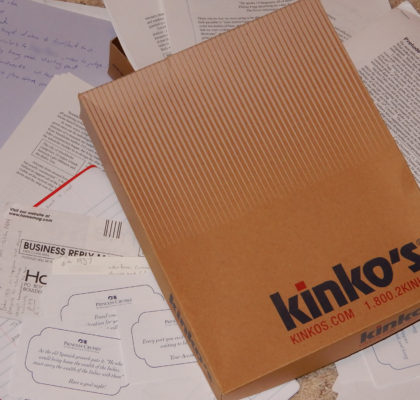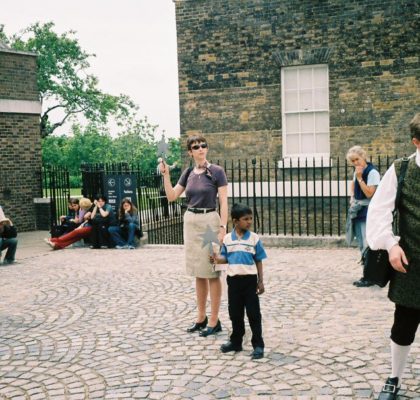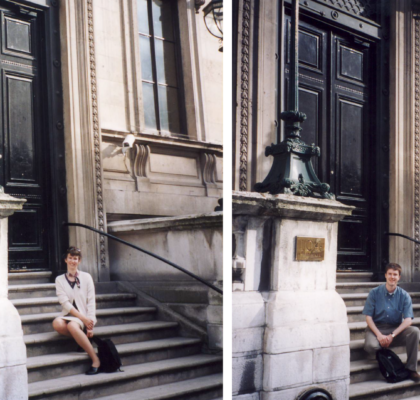- March 4, 2001 (Day -4)
- March 6, 2001 (Day -2)
- March 7, 2001 (Day -1)
- March 8, 2001 (Day 1)
- March 10, 2001 (Day 3)
- March 11, 2001 (Day 4)
- March 12, 2001 (Day 5)
- March 13, 2001 (Day 6)
- March 14, 2001 (Day 7)
- March 15, 2001 (Day 8)
- March 16, 2001 (Day 9)
- March 17, 2001 (Day 10)
- March 18, 2001 (Day 11)
- March 19, 2001 (Day 12)
- Time Check: Day 12
- March 20, 2001 (Day 13)
- March 21, 2001 (Day 14)
- March 22, 2001 (Day 15)
- March 23, 2001 (Day 16)
- March 24, 2001 (Day 17)
- March 25, 2001 (Day 18)
- March 26, 2001 (Day 19)
- March 27, 2001 (Day 20)
- March 28, 2001 (Day 21)
- March 29, 2001 (Day 22)
- March 30, 2001 (Day 23)
- Time Check: Day 23
- March 31, 2001 (Day 24)
- April 1, 2001 (Day 25)
- April 2, 2001 (Day 26)
- April 3, 2001 (Day 27)
- April 4, 2001 (Day 28)
- April 5, 2001 (Day 29)
- Time Check: Day 29
- April 6, 2001 (Day 30)
- April 7, 2001 (Day 31)
- April 8, 2001 (Day 32)
- April 9, 2001 (Day 33)
- April 10, 2001 (Day 34)
- April 11, 2001 (Day 35)
- Time Check: Day 35
- April 12, 2001 (Day 36)
- April 13, 2001 (Day 37)
- April 14, 2001 (Day 38)
- April 15, 2001 (Day 39)
- April 16, 2001 (Day 40)
- Time Check: Day 40
- April 17, 2001 (Day 41)
- April 18, 2001 (Day 42)
- April 19, 2001 (Day 43)
- Time Check: Day 43
- April 20, 2001 (Day 44)
- Intermission
- April 21, 2001 (Day 45)
- April 22, 2001 (Day 46)
- April 23, 2001 (Day 47)
- April 24, 2001 (Day 48)
- April 25, 2001 (Day 49)
- April 26, 2001 (Day 50)
- April 27, 2001 (Day 51)
- April 28, 2001 (Day 52)
- Time Check: Day 52
- April 29, 2001 (Day 53)
- April 30, 2001 (Day 54)
- May 1, 2001 (Day 55) – Part I
- May 1, 2001 (Day 55) – Part II
- May 2, 2001 (Day 56)
- May 3, 2001 (Day 57)
- May 4, 2001 (Day 58)
- May 5, 2001 (Day 59)
- May 6, 2001 (Day 60)
- May 7, 2001 (Day 61)
- Time Check: Day 61
- May 8, 2001 (Day 62)
- May 9, 2001 (Day 63)
- May 10, 2001 (Day 64)
- May 11, 2001 (Day 65)
- May 12, 2001 (Day 66)
- May 13, 2001 (Day 67)
- May 14, 2001 (Day 68)
- May 15, 2001 (Day 69)
- Time Check: Day 69
- May 16, 2001 (Day 70)
- Time Check: Day 70
- May 17, 2001 (Day 71)
- May 18, 2001 (Day 72)
- May 19, 2001 (Day 73)
- May 20, 2001 (Day 74)
- May 21, 2001 (Day 75)
- May 22, 2001 (Day 76)
- May 23, 2001 (Day 77)
- May 24, 2001 (Day 78)
- May 25, 2001 (Day 79)
- Intermission – Part II
- May 27, 2001 (Epilogue)
May 20, 2001 (Day 74): QE2 bound for Southampton, England – 10.45pm
Health: Good.
Morale: Good.
Overcoming the realization that yesterday was one of mounting disappointments, I am better able to judge today and the ship on its own merits. Yesterday felt like one letdown after another and I knew it colored my outlook. I am a little more objective today. A decent nights’ sleep without the dread of packing can do wonders. The halls smell less of broken humidifiers, more of an aroma of turpentine. And the chemical smell of the water we need to ingest is less than pleasant. But, I am choosing to look on the bright side.
The Regal Princess seemed a leisurely stroll through the ocean compared to this. We are really moving along. The Cunard seminar we attended today confirmed this impression. Despite its size, the QE2 can move faster astern (in reverse) than many ships can move forward. She can move 32 knots forward and 19 astern (the ship, that is, not Her Majesty, Queen Elizabeth II – although one hears that Her Majesty can be measurably stern). While we cannot independently confirm this, we were assured that this was faster than most merchant ships can currently go.
Cunard and White Star Lines merged in the 1930’s. Cunard ships were typically given names that ended in an “ia” as in Britannia, Aquitania, Hysteria, and Mauritania. The names of ships in the White Star Lines fleet were christened with names that ended in “ic” as in Brittanic, Titanic, Olympic, and Iambic. The first ship commissioned under the joint operation was the Queen Mary, part of a new naming scheme to keep both sides happy.Cunard seminar: May 20, 2001
The seminar began without pesky introductions and other pleasantries. The speaker ascended the platform and began speaking. The first ship in Samuel Cunard’s fleet set sail on July 4, 1840 with the primary goal of providing frequent and reliable mail service between Liverpool and Boston. Traveling at a speed of 8½ knots, the Britannia made this crossing in 13 days. For those who wished passage, basic accommodation was provided. There were 116 passenger berths. There were none of the luxuries one associates with Cunard then, but they did have their own cow for milk and chickens for eggs and meat. That might have explained some of the aromas I have encountered.
The distinctive scarlet and black coloring was decided upon after realizing that most other colors burned off when applied to the smokestacks of the ship. They devised a mixture of scarlet paint that was resistant to this heat. The rest is, as they say, … well, you know.
It was emphasized that the Cunard line has not lost any passengers except to war – at this, the speaker touched wood – the exception being the Luisitania. I wondered aloud if the ship was carrying illicit munitions for the war effort but, because she did not seek to present the Luisitania as an “innocent victim to naked German aggression”, I was dissuaded from repeating my query in a louder voice.
The Queen Mary and the Queen Elizabeth I were used during the Second World War as troop transport ships, ferrying men from the United States to the European theatre. The QE1 was completed in 1940 and its positioning cruise was used as a diversion. Its sailing from the shipyards of Clyde in Scotland to its harbor in the south of England was well publicized. Knowing that German U-boats would and had gathered in the Channel anticipating its arrival, it sailed in secret to New York. Curiously, it was faster than most U-boats.
Continuing in this tradition, the QE2 served during the Falklands War, but the speaker did not elaborate on her role.
She is the only regular service transatlantic liner still in service. Word has it that she is the fastest ship afloat. The crew represents 42 different countries. The country with the greatest representation amongst the crew is the Philippines.
I have accepted the shabbiness of the ship and have geared myself to enjoy the rest of the cruise. Nothing else has broken in the room, although the furniture emits a frequent creaking. Being on the Barnacle Deck, there is only a slight rocking motion to the ship. However, the crew remains stand-offish and the passengers are quite insular. The passengers do not seem to want to chat. This far into our cruise on the Regal, we had met people that we were in frequent contact with throughout the remainder of the cruise.
Not getting much support for my lack of interest in jazz. All others at our dining table love it and took this cruise for that reason. One well-dressed chap at our table was a jazz musician, so I would get little sympathy from him.
Found many ways to keep busy: partook of afternoon tea; walked a mile; climbed countless stairs; made use of the wonderful library. Tonight, the formal nights have begun. I opted for “informal” attire which, viewing some of the outfits worn by other guests, was far less formal than the Cunard standards. This was a relief. I have, however, rented a tuxedo for tomorrow evening. My fashion statement will be black tie and hiking boots.
I had a wonderful dance with my girl. The band regaled us with another common tune on this trip, “Moon River.” Curiously, they also played music from Titanic, which does not bode well.
I asked Anna if she knew then what she knew now, would she go on the trip. She said no. I agreed. The surprise of what might lie ahead generated the excitement and supplied patience. Knowing then what it would take to do and see what we have done would have probably been enough to keep us at home.
This entry was posted in Around the World

